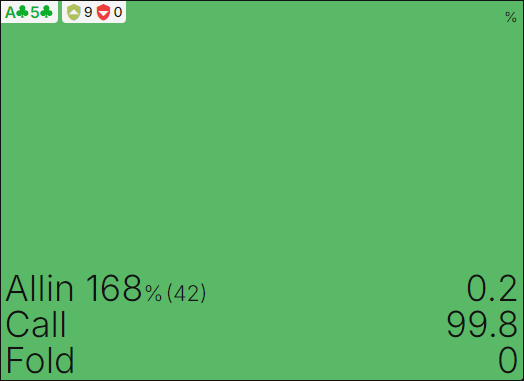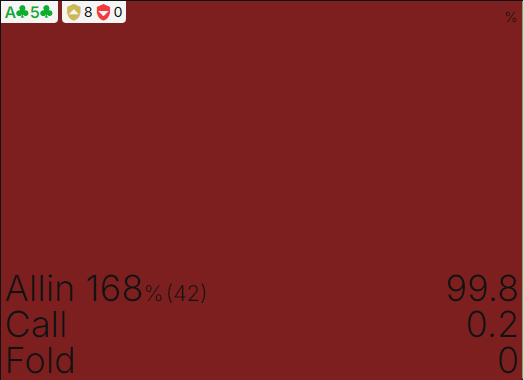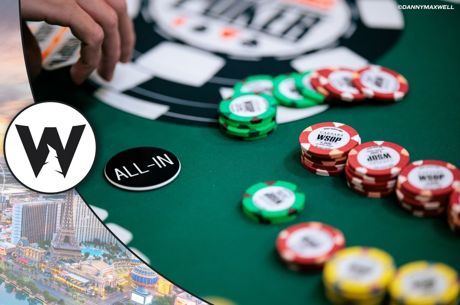Gambledore Throws GTO Out the Window at Triton Poker Super High Roller

Table Of Contents
The poker community was captivated by the Triton Poker Super High Roller Series in Monte Carlo this month, with Vladimir Korzinin stealing the spotlight on the glamorous French Riviera.
The 69-year-old Estonian, a fresh face on the high roller scene, quickly became a fan favorite thanks to his unorthodox and daring style of play against the world’s most elite competitors.
Dubbed "Gambledore" during the series, Korzinin fell just short of claiming his first Triton title after a heads-up clash with Patrik Antonius in the $200K Triton Invitational. However, he didn’t have to wait long for redemption as Korzinin conquered a stacked field in the $150K NLH Event, securing a jaw-dropping $7.82 million across both events and catapulting himself to the top of Estonia's All-Time Money List.
Go From Muggle to Wizard with a GTO Wizard Training Plan
Korzinin’s victory featured a pivotal moment in a high-stakes clash against Sam Greenwood on the final table. With eight players remaining, Korzinin held the chip lead, and Greenwood was his closest challenger. What followed was a hand that saw ICM strategy seemingly thrown out the window.
To unravel the intricacies of the hand, we asked our friends at GTO Wizard for an in-depth analysis of the tournament-defining pot. Who stayed true to GTO principles, and who went rogue?
But before diving into the breakdown, check out the final table stack sizes and payouts to appreciate just how game-changing this hand truly was.
| Player (Position) | Stack Size |
|---|---|
| Dan Smith (UTG) | 940,000 |
| Ossi Ketola (EP) | 2,500,000 |
| Vladimir Korzinin (MP) | 5,700,000 |
| Tom Fuchs (HJ) | 3,500,000 |
| Stephen Chidwick (CO) | 3,100,000 |
| Fedor Holz (BTN) | 1,600,000 |
| Bryn Kenney (SB) | 2,300,000 |
| Sam Greenwood (BB) | 4,400,400 |
| Place | Prize |
|---|---|
| 1 | $4,350,000 |
| 2 | $2,970,000 |
| 3 | $1,962,000 |
| 4 | $1,616,000 |
| 5 | $1,300,000 |
| 6 | $1,016,000 |
| 7 | $762,000 |
| 8 | $562,000 |
Preflop
Korzinin raised Q♣Q♠ for two big blinds, and Greenwood defended his big blind with A♣5♣. Greenwood should always just call with his hand here and generally play passively preflop by only raising AxAx for value (KxKx never raising) and sprinkle in some low offsuit AxXx as bluffs. Greenwood wants to play carefully here because he and Korzinin both have the largest stacks at the table. In these cases, there isn’t much incentive to go after each other by playing aggressively, as both players have a lot to lose but not much to gain since both are already in a comfortable position to survive to later stages.
By playing aggressively in these situations, both players would “leak” EV to the rest of the table when playing large pots. If one player loses his large stack, the expectation of the rest of the players goes up, which is something we want to avoid when navigating big stacks in tournaments. Simply put, one player going down the ranks means that the rest of the players go up in rank.
Flop
Korzinin decided to overbet his overpair of queens on a flop of 10♣4♣2♦, which is a very unusual play for this scenario, and Greenwood chose to go all-in for the rest of it. Here’s where things get out of hand, and GTO goes out the window:
Korzinin should use only small bet sizes on the flop for the same reason we outlined for preflop. He shouldn’t pick battles with more bad outcomes than good ones on average. Betting smaller would allow him to get value without risking too much of his valuable stack. Obviously, Korzinin hasn’t studied ICM spots, and it seemed like he chose the overbet size because of his hand strength.

Against overbet on the flop, Greenwood would need to only call the overbet with his specific hand A♣5♣ in theory instead of jamming all-in.

The reason is that by going all-in, Korzinin would have to fold his flush draws, which Greenwood dominates. Both all-in and call are profitable options, although call outperforms all-in since, in theory. Greenwood should reach the river and win at showdown unimproved decently often while also maximizing against worse flush draws by keeping them in the hand and stacking them when we get there.
Are these assumptions accurate in reality?
Does This Mean Greenwood’s All-In Was a Mistake
Exploitatively speaking, Greenwood’s all-in with a gutshot and nut flush draw makes a lot of sense and is a brilliant play. If we assume that Korzinin’s overbet range construction is very under-bluffed and Greenwood just calls the flop, A♣5♣ will always have to fold the turn against an all-in, which will frequently happen against an opponent under-bluffing.
Instead, we believe Greenwood, being the crusher that he is, recognized that Korzinin was likely playing his hand face up and, therefore, recognized that he would not see many rivers by just calling the flop, which makes calling less attractive. By raising all-in on the flop, his hand enjoys a variety of benefits:
- Realizing its full equity
- Putting in his stack while he is slightly ahead in terms of equity
- Always winning the maximum when hitting the flush
- Potentially getting called by Korzinins misplayed flush draws
Looking at this nodelocked solution, we can see that once Korzinin bets too value-heavy, Greenwood should lean towards all-in or fold (A♣5♣ specifically always jamming) to avoid calling the flop and being forced to fold the turn with so much equity.

Conclusion: Is Korzinin a GTO Wizard after all?
Korzinin played his hand pretty straightforwardly, far from theoretically correct poker wizardry, so this is a GT-NO, unfortunately.
Greenwood, on the other hand, made the right exploitative adjustment against Korzinin's face-up range construction by forcing him to go all-in at a slight equity disadvantage.
Although everyone’s eyes were on Mr. Gambledore, the actual wizard in this hand was Sam Greenwood!
GTO Wizard Review - Is GTO Wizard Worth It?
Hand analysis provided by Sotos in collaboration with GTO Wizard








